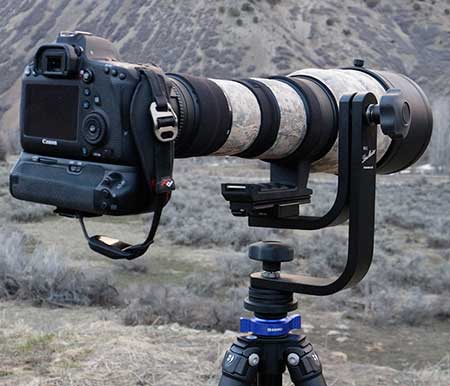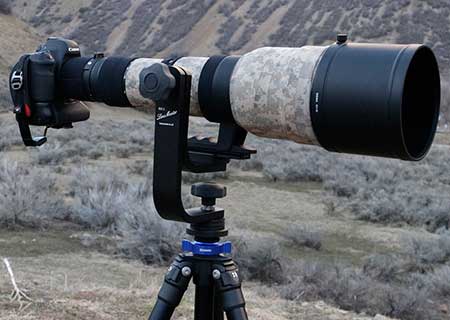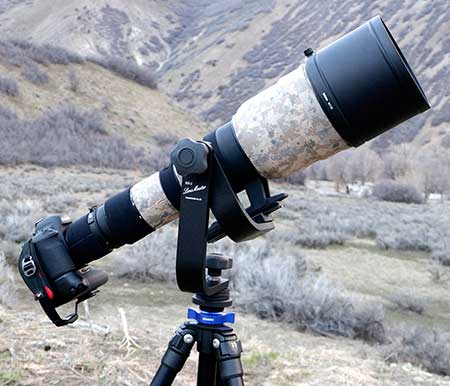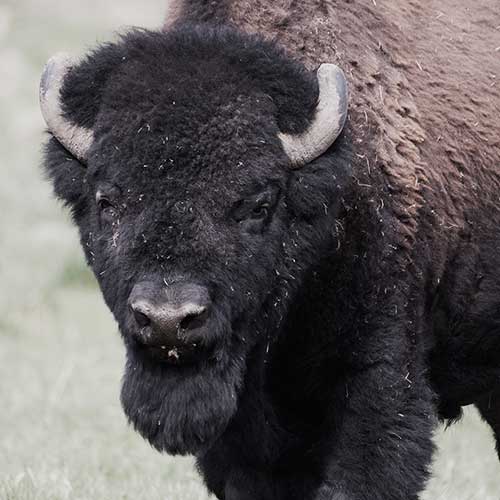The LensMaster RH-2 Gimbal is designed for large and heavy lenses, such as those favored by wildlife photographers. I’m lucky enough to be able to shoot with a Sigma 300-800 f5.6 lens. Sadly, at 12.9 pounds, this huge hunk of glass does not play well with even the more expensive ballheads. So a few emails back and forth with Robert from LensMaster, and he agreed to slightly modify his existing design. This semi-custom gimbal now works with my lens. The Sigma is a bit bigger than the 800mm f5.6 glass on offer from Nikon or Canon.
For those not familiar with the brand, LensMaster is run by Robert Hardy. Robert does all the machine work for these small batch gimbals at his shop in North East Lincolnshire, England. Since he does the work himself, there is a short wait for the custom gimbals to be made. He finished mine in 6 or 7 days, and did it at the same price he charges for his standard unit. Yes, this is about half the price you would pay for a big name gimbal. If you don’t need a custom one, there is no wait other than shipping time. Delivery to the US is usually a couple of weeks. Customs in Los Angeles felt the need to hold mine for 8 days though. Total wait from our first contact to final delivery was about one month. Not bad for a custom gimbal.

When I first opened the box, I think I was a little surprised at the size and weight. The two L shaped pieces that make up the main parts are thick aluminum. From adjuster knob to clamp knob, it’s over 9 inches wide, and from top to bottom, it’s just under 10 inches tall. Weight is only 2 pounds, 11 ounces (1.21 kg), which is light for a gimbal that can support a 100 pound (45 kg) static load. It has a steel fitting threaded for a standard 3/8 stud on the underside, and two Arca-Swiss compatible plates are included.

Installation took all of two minutes, as I already had a plate attached to my lens. It only took a bit of sliding back and forth to find the balance point. Then I locked down the clamp. Two large rubber knobs control the friction for the pan (horizontal) and swing (vertical) movements. It only takes about 1/4 turn to go from locked to being able to smoothly track your subject. When you take your hands off the camera, the lens just stays put. One nice touch is that the bearings are all needle roller thrust bearings, sandwiched between flat washers. Translation: Anyone can service their RH-2 gimbal at home with nothing more than some soapy water and fresh grease. No special tools or skills required.

As I mentioned in my review of the tripod I bought to go with this gimbal, my keeper rate has improved since adding it to my kit. With a gimbal, the lens is balanced and almost “floats”, unlike a ballhead, where it wants to fall to over as soon as friction is reduced. This makes it much easier to pan and tilt to find my subject, then compose my shot and fire off a few frames. So far, I’ve taken photos of bison, moose, elk, deer, and wild turkeys. I have not used it to try to capture birds in flight, since I’m not so good at that with much smaller lenses. But with practice, it’s a skill I should be able to master now.

There are many gimbals out there, and with the big names, they start at $174 (Manfrotto), and can easily go upwards of $500. If you’re shopping for a gimbal, the LensMaster RH-2 is far more elegant and user-friendly than the Manfrotto. And at about $236 with shipping, is less than half the $595 price tag of what many consider to be the “industry standard” (Wimberley). Wimberley makes a great product as well, but their only clamp option is a quick release Arca-Swiss style. LensMaster allows you to remove the clamp and replace it with one of your choice, if desired. Plus, it’s user-serviceable. So if you’re looking for a gimbal, check out the LensMaster website. If you have any questions, send Rob an email. I’m sure he’ll get back to you right away.
– Brian
That Gimbal looks really nice, I bet you’ll enjoy this for quite some time!